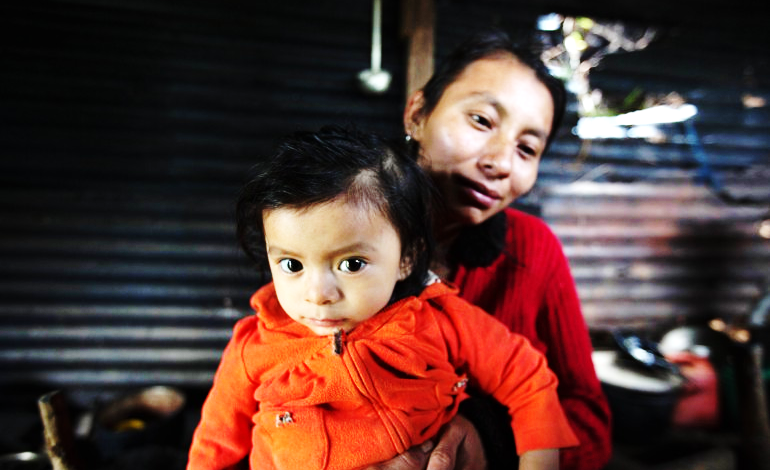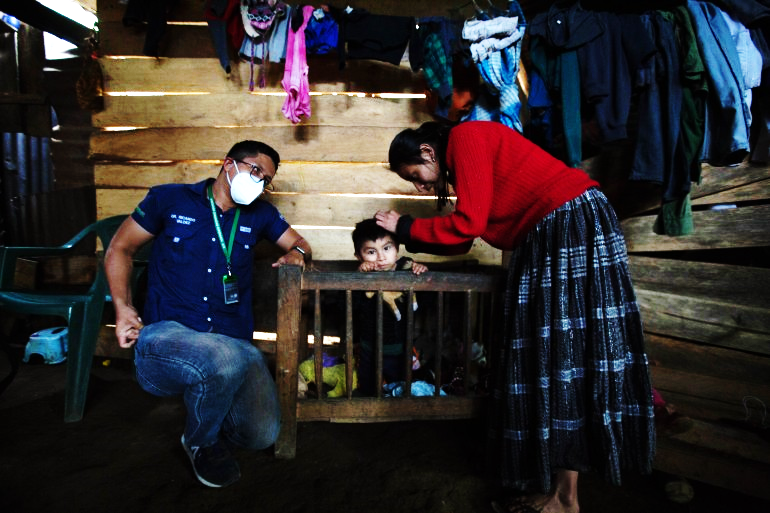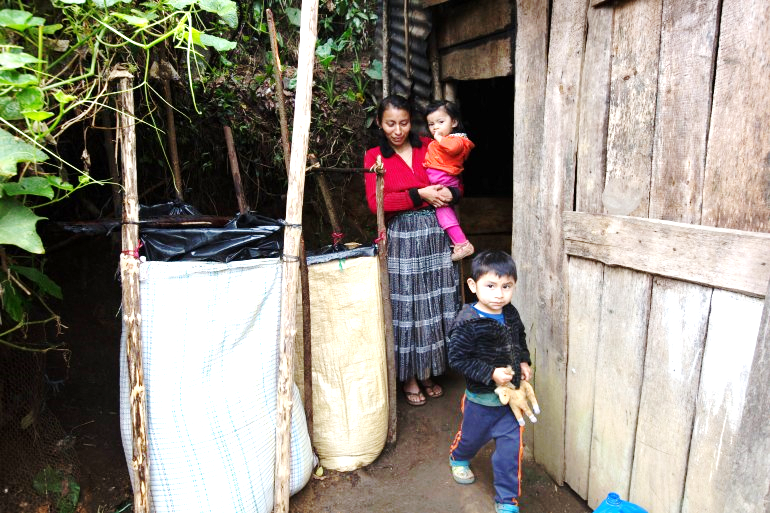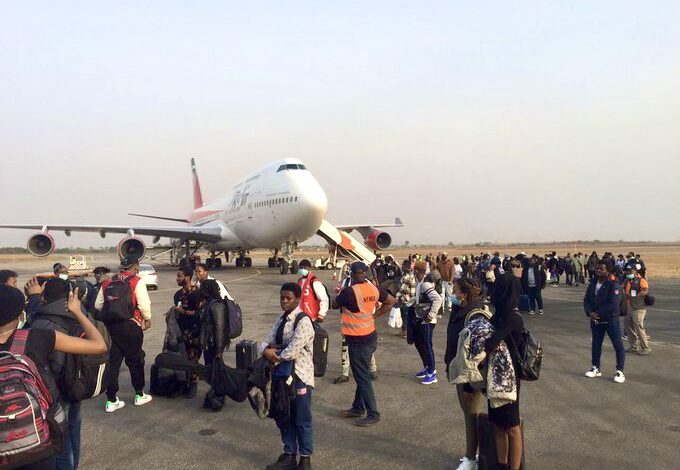
Avellon Williams
COBAN, GUATEMALA – It is a steep, worn path up to a small group of rusted-steel roofed wooden houses in a small community outside of Coban, Alta Verapaz, that Dr. Ricardo Valdez walks along.
Coban, about 200 kilometers from Guatemala City, has been plagued by an epidemic of child malnutrition, made worse in the past two years by the Covid-19 pandemic and ensuing humanitarian crisis. Critics allege that the government has largely neglected the problem.
According to UNICEF, Guatemala has one of the highest rates of chronic malnutrition among children under the age of five, with nearly half of these children suffering from chronic malnutrition. It is reported that in some rural areas, the figure can reach 80 percent.
Margarita Xol, a 28-year-old single mom of two, who is unemployed, welcomes Valdez to her house. Her youngest daughter, now almost two years old, has repeatedly suffered pneumonia due to malnutrition.
According to Xol “I thought my daughter was going to die,” “I felt sad. [I didn’t know] what I was going to do.”
In Guatemala, she says, the public healthcare system was not helpful, so she sought help from Comunidad Esperanza, an NGO Valdez works for. To date, the group continues to provide her with food aid, including goat’s milk.
Valdez explained “We stepped in because the Ministry of Health was not going to do anything,” noting that the problem of malnutrition in the country “is much bigger than it seems than what is shown in the statistics”.

INEQUALITIES RESULTING FROM STRUCTURAL FACTORS
The malnutrition crisis in Guatemala, which experts attribute to structural inequalities across the country, has been exacerbated by the pandemic and the aftermath of hurricanes Eta and Iota in 2020.
In response to Sofia Letona, head of the local humanitarian group Antigua al Rescate, says: “When you talk about malnutrition, you’re not just talking about food.”
“Malnutrition is more than just being hungry.”
“Malnutrition is not having access to the basic elements of your human rights,” she said.
Malnutrition is being deprived of water, electricity, roads, having a dirty floor, having to walk for hours to get from one place to another, and losing money. [It is] the way in which you can see how a state abandons its people.”
The majority of Guatemala’s population lives in poverty, and indigenous communities are disproportionately disadvantaged. Despite lofty campaign promises, subsequent governments have failed to tackle this crisis.
According to Lucrecia Hernandez Mack, a former Guatemalan health minister, and physician, “there is no real interest.”
“Generally, [combating malnutrition] is used as a campaign slogan … [but governments] do not engage the problem, because it is a structural issue.”

There have been tens of millions of dollars allocated by the Guatemalan government in its current budget to combat child malnutrition, but critics say this isn’t enough. Prensa Libre reports that Guatemalan health ministers had used just 2 percent of this budget by March 1, as disease cases continued to rise.
In response to comments about the matter, the health ministry did not immediately respond.
President Alejandro Giammattei proposed last year that Guatemalan banks offer account holders the option of donating remaining cents to combat malnutrition.
Several months earlier, in November 2020, Guatemalans torched Congress after the government approved a series of controversial budget cuts, including $25m meant to combat malnutrition. Despite the funds being restored, public anger remained high.
‘HOW ARE THEY GOING TO SURVIVE?’
As a result, NGOs have largely been left with the task of addressing the malnutrition crisis. UNICEF nutritionist Maria Claudia Santizo said that UNICEF has been working with the Guatemalan health ministry to identify malnutrition cases.
“[We have] supported the ministry of health to be able to actively search for cases of acute malnutrition in the most rural and remote communities, with the aim of being able to identify them in a timely manner, treat them in a timely manner and prevent their death,” Santizo said.
Yet as the costs of basic goods continue to rise, she asked, “how is it going to be for the people who live in the countryside; how are they going to survive?”

Xol, who primarily speaks Mayan Q’eqchi’ language, sees this crisis as part of her family’s everyday routine. She and her father live in an uninsulated makeshift house near a dump with no running water or electricity, and they rely on her father’s $2 a day, which he earns from selling firewood, to buy basic necessities.
Xol’s father sold the family’s land when her mother’s health declined and they needed money to purchase medication. Today, Xol wants to work so she can provide for her children, but since they are both under five, she must remain at home to take care of them.
“I desire to have a house and a small plot of land for me and my children,” Xol said. “But we do not have any money.”





Recent Comments